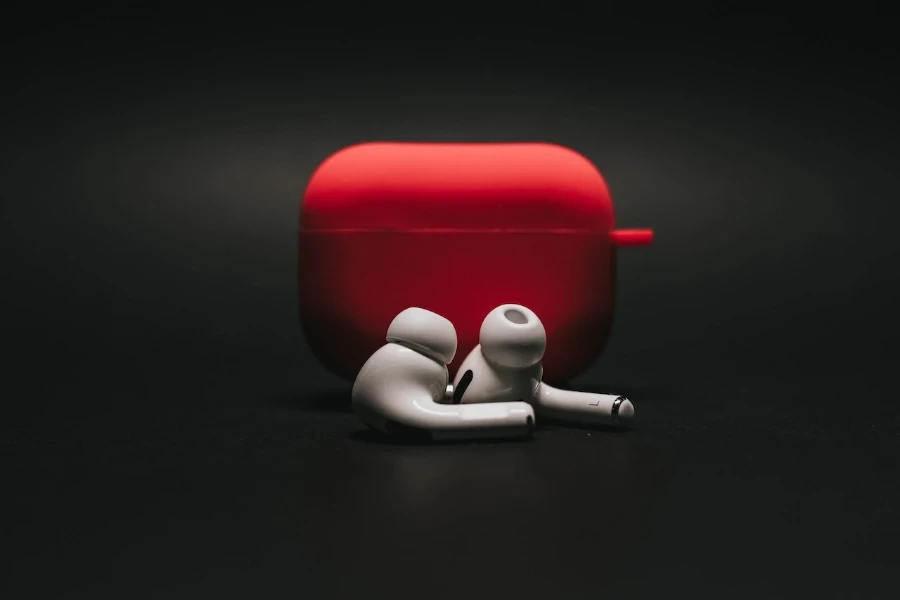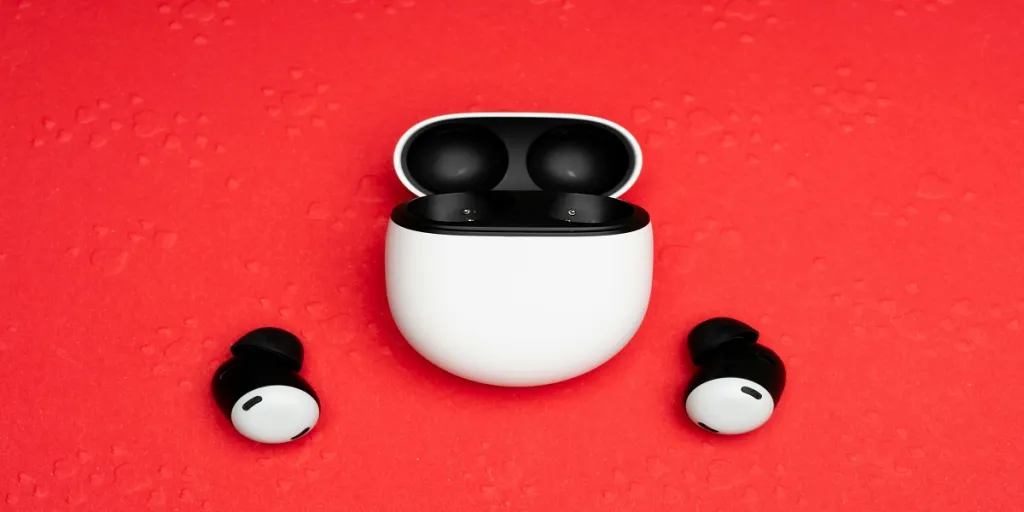Music and audio have become integral to our daily lives. So finding the perfect pair of in-ear headphones is crucial for personal enjoyment and professional needs.
Whether you’re a retailer, distributor, or entrepreneur running an online electronics store, understanding the key features and factors contributing to an exceptional in-ear headphone experience is vital to meet the diverse demands of your customers. From superior sound quality and noise cancellation to ergonomic design and durability, the market is flooded with options, making the decision-making process a challenge at times.
This article aims to provide key insights, expert recommendations, and valuable tips to help you navigate the maze of in-ear headphones.
Table of Contents
What are in-ear headphones?
Market for in-ear headphones
How to choose the right in-ear headphones
Conclusion
What are in-ear headphones?
In-ear headphones are personal audio devices that fit snugly inside the ear canal. They are distinct from traditional over-ear or on-ear headphones, providing a more compact and portable listening experience.
Unlike earbuds, which rest on the outer ear or sit loosely in the ear canal, in-ear headphones create a tighter seal inside the ear, effectively blocking out external noise and delivering a more immersive sound experience. This seal not only enhances audio quality but also helps to prevent sound leakage, making them a preferred choice for those seeking privacy or working in noisy environments.
In-ear headphones are typically designed with various sizes of interchangeable ear tips to ensure a comfortable and secure fit for different ear shapes and sizes. They often come with advanced features such as noise cancellation, built-in microphones for hands-free calls, and inline controls for easy access to volume and playback.

Market for in-ear headphones
In 2022, the global headphones market was valued at USD 58.3 billion, and in 2022 the market for earphones accounted for 89.40% of the overall share. The specific market for in-ear headphones was valued at USD 30.2 billion and is projected to reach USD 132.7 billion by 2028.
Gym-goers have had a significant impact on the growth in the headphone market, particularly when it comes to wireless headphone options. More than 25% of gym-goers spend 10 minutes untangling their headphones before a workout, which is a significant factor in opting for wireless options. In 2021, wireless headphones accounted for 76.2% of the market.
When it comes to headphone prices, the USD 50 to 100 segment dominates, accounting for 39% of the market.
How to choose the right in-ear headphones
Choosing the right in-ear headphones can be subjective, depending on individual preferences and specific requirements. However, here are some key factors to consider when making your selection on what to carry:
Sound quality
When considering sound quality, customers look for headphones that match their preferred audio profile. Some headphones emphasize bass, while others focus on providing a more balanced and neutral sound. Pay attention to the driver technology used, such as dynamic drivers, balanced armature drivers, or hybrid combinations, as they can significantly impact sound reproduction.
Sound preferences can vary, so what sounds great to one person might be less appealing to another, so retailers need to carry a variety of options to appeal to consumers. To appeal to the widest audience, look for headphones with a balanced audio profile, clear highs, rich mids, and defined bass.
One of the best selling in-ear headphones for sound quality is Bose, while these are considered the best for base. A close runner up as a best seller is the Galaxy buds at the slightly lower price point.
Comfort and fit
Since in-ear headphones go inside the ear canal, finding a pair that fits comfortably and securely is important. Ensure all in-ear headphones come with different sizes and shapes of ear tips, such as silicone or foam, to accommodate various ear canal sizes and shapes. Proper fit is essential for achieving optimal sound quality and noise isolation.
Build quality and durability
The build quality of in-ear headphones can vary significantly. Look for headphones made with durable materials such as aluminum, stainless steel, or reinforced cables to withstand daily wear and tear.
Those who plan to use headphones during workouts or in rainy conditions must consider models with an IPX rating indicating water and sweat resistance to ensure they remain functional and intact even in adverse conditions. If your headphones have an IXP rating, include this in the product listing.
When it comes to electronics, it’s important to have a product warranty and customer support if there are product issues.
Noise isolation and noise cancellation
Customers may seek either noise isolation or noise cancellation based on their specific needs, preferences, and the environments in which they plan to use their headphones. So, let’s talk about both, so you can understand why it’s important to carry both options:
Noise isolation
Noise isolation refers to the passive blocking of external noise by creating a tight seal in the ear canal. This feature enhances the music listening experience by reducing background noise.
The effectiveness of noise isolation largely depends on the quality of the seal and the ear tip material. Properly fitting ear tips can significantly reduce ambient noise and create a more immersive listening experience, making them a popular choice for commuters and those who prefer a simple solution without any additional electronics. However, passive noise cancellation has limitations, particularly when dealing with low-frequency and sudden loud noises (bass sounds). Low-frequency sounds can be harder to block, and some external noises may still seep through the seal, albeit at reduced levels.
Active noise cancellation (ANC)
Active Noise Cancellation is an advanced technology that goes beyond the passive blocking of noise. ANC-equipped in-ear headphones use tiny microphones to detect ambient sounds around you. These microphones pick up external noises and generate corresponding sound waves with opposite phases to eliminate unwanted noise.
The anti-noise sound waves are then played through the headphones alongside your audio, effectively “neutralizing” the ambient noise before it reaches your ears. This sophisticated process significantly reduces external noise, particularly low-frequency sounds like airplane engine hum, traffic noise, or air conditioning.
Active Noise Cancellation is especially useful in loud environments, as it can drastically enhance the clarity of your music or calls by reducing the background noise. It allows you to enjoy your content without raising the volume to compensate for external distractions, potentially reducing listening fatigue.
However, ANC technology requires additional components, such as dedicated microphones and processors, which can affect the headphones’ size, weight, and battery life. As a result, ANC-enabled in-ear headphones are generally more expensive than standard noise-isolating models.
Connectivity and additional features
While many consumers love wireless headphones, some seek the higher-quality sound associated with a wired headphone connection. Wireless options, like Bluetooth-enabled headphones, offer more freedom of movement, but they require charging and might introduce slight audio latency. Wired options may provide better sound quality, especially if they support higher-quality audio codecs. Retailers should carry both wired and wireless headphone options.
Consider any extra features that align with your customer needs.
- Built-in microphones are beneficial for making calls without removing headphones.
- Inline controls for playback, volume adjustment, and call management can enhance convenience.
- Some headphones also support voice assistants like Siri or Google Assistant for hands-free control.
Additionally, some premium models may offer features like app integration for customizable sound profiles or firmware updates to enhance performance over time.
Budget
Budget will play a significant role in consumer choice. While high-end models often offer top-notch sound and features, there are many excellent mid-range and budget-friendly options that cater to different needs. Many consumers are purchasing within the $50 to $100 USD range, but having a few options outside of this as well will help ensure you meet a wide range of consumers.

Conclusion
As the demand for high-quality audio experiences continues to soar, offering top-notch in-ear headphones can set your consumer electronics business apart.
By considering factors such as sound quality, comfort and fit, noise isolation or active noise cancellation, durability, connectivity, additional features, and budget, retailers can confidently curate a diverse selection of in-ear headphones that cater to the unique needs of their customers.
With a keen focus on quality, innovation, and customer satisfaction, your business can become a go-to destination for those seeking the ultimate in-ear headphone experience. As the market evolves and new technologies emerge, staying informed and updated will be key to ensuring your offerings remain at the forefront of the industry.




